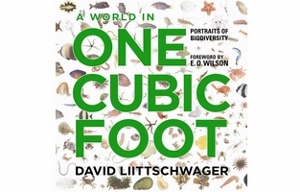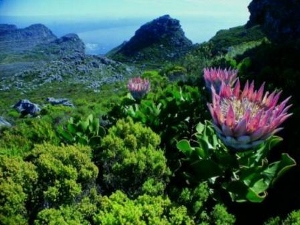Biodiversity by the Half Dozen…
Author: David Liittschwager
 Miniscule is the rule. It’s not necessarily obvious until you think about it, but a large majority of all the critters that run, fly, hop or slither over the Earth’s surface would fit inside a thimble. It was this kind of scale that acclaimed nature photographer David Liittschwager had in mind when he conceived A World in One Cubic Foot, a remarkable photographic excursion into some of the most biodiverse locations on the planet.
Miniscule is the rule. It’s not necessarily obvious until you think about it, but a large majority of all the critters that run, fly, hop or slither over the Earth’s surface would fit inside a thimble. It was this kind of scale that acclaimed nature photographer David Liittschwager had in mind when he conceived A World in One Cubic Foot, a remarkable photographic excursion into some of the most biodiverse locations on the planet.
Equipped with a cube shaped metal frame – one foot on each side – and a portable photographic studio, Liittschwager visited six natural areas: a coral reef off of Moorea in the South Pacific; a cloud forest in Costa Rica; stormy seas under the Golden Gate Bridge; a woodland area at Hallett Nature Sanctuary in New York City’s Central Park; a small freshwater creek called Duck River in Tennessee; and a fynbos in Table Mountain National Park, South Africa. At each location, he carefully chose a spot and set down (or floated) his cube, watching, collecting and then photographing any animals or plants that he found living or passing through the space over a matter of days. With persistence and a steady hand he was able to capture dozens of beautiful and bizarre organisms on film.
While some large animals are featured – a California sea lion, an orangespine unicornfish, a hermit thrush, a red-eared slider turtle – along with numerous beautiful plants, the book focuses primarily on the little things, like damselflies, jellyfish, beetles, crabs, slugs, flies, moths and many more in a dizzying array. The close ups of these easy to overlook, minute creatures are quite captivating, revealing myriad tiny details. One page displays a collage of 190 tiny crabs from at least 32 different species that the author collected at the coral reef location.
Opening with a forward by the eminent E.O. Wilson, each of the subsequent six chapters starts with a brief orientation essay by a featured writer, poet or expert along with some technical notes from the photographer. A couple dozen of the best pictures follow – the animal or plant alone against a white background – and each chapter closes with more than a hundred tiny portraits spread across two pages with an accompanying species key, providing a sense of the amazing diversity at each site.
The book itself is massive square hardcover, one foot on a side, allowing a large space for each photograph and sure to make a striking addition to any coffee table.
The book succeeds on multiple levels. The technical quality of each photograph is outstanding, which is remarkable given that they were taken in a portable studio on location. The artistic aspects of the works are also impressive, even when featuring not particularly photogenic creatures like ants, snails or ground beetles. Lastly, Liittschwager convincingly displays the amazing biodiversity of these special areas, pointing out that at a few of the sites, placing the cube in a different spot just a few steps away might have revealed an significantly different cast of ecological characters.
An entertaining world tour, particularly for those of any age who are fascinated by creepy crawly things, A World in One Cubic Foot, is highly recommended by this nature fanatic. Allowing the reader to shed the inherent bias that comes from being a big animal, it provides a close up look at much of life that otherwise goes unseen.
— D. Driftless
photo by Abu Shawka
- Best Non-Fiction of 2016 - February 1, 2017
- Little Free Library Series — Savannah - May 22, 2015
- Little Free Library Series — Wyoming - November 30, 2014



Leave A Comment